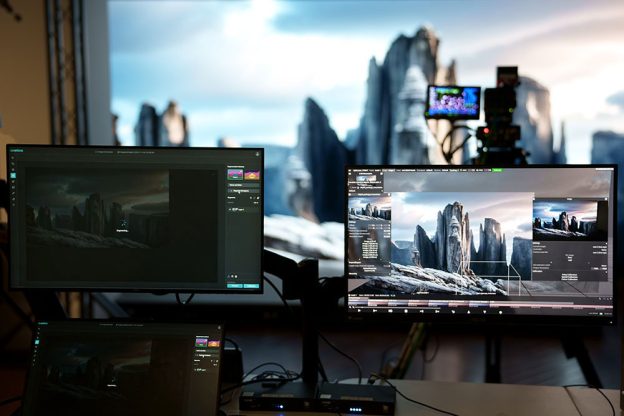disguise is taking steps to promote the use of 2.5D workflows in virtual production, but what does that actually mean?
Unlike 2D plates, 2.5D offers a hint of dimensionality without the full complexity of real-time 3D environments. A 2.5D workflow, often regarded as the bridge between 2D and 3D, involves layering multiple 2D images with alpha channels (aka transparency) to create an illusion of depth. Due to the layering of the multiple images, parallax is introduced as the camera moves, infusing a subtle dynamic movement.
disguise-owned Meptik‘s definition of a 2.5D workflow

2D workflow
This uses plates created by capturing and editing stills or moving images that are then used as backdrops – mostly distant backgrounds – on LED screens. They lack depth and parallax effect, offer limited camera movement scope and can’t be changed on set.
3D workflow
When people think of virtual production’s advantages, they’re actually imagining a 3D workflow that uses a real-time, immersive world built in a game engine with a parallax effect that updates as the camera moves freely in any direction and allows the production team to make iterative changes on set.
Using a 3D workflow requires additional time, specialist resources and more money, putting it out of the reach of many projects.
2.5D workflow
2.5D plots a cost-effective middle ground between what productions would like and what they can afford. You get photorealism, parallax and the illusion of depth, to allow for the introduction of a mid ground, for example, without the long, expensive preproduction process requiring a specialist Virtual Art Departments (VAD). It also offers directors and cinematographers more scope to explore what else they might be able put on screen while remaining in budget.
When should you use a 2.5D workflow?
At its most basic, if you feel it needs an extra something, 2.5D’s value lies in its ability to really raise your project’s production values at a much lower cost than real-time 3D..
At Mondatum we are devising a new form of 2.5D background solution that uses sophisticated mathematical optimisation to enhance techniques developed in the ’80s and ’90s by Mondatum CTO Neil Harris and his contemporaries.
If you would like to find out more about this solution, please get in touch – Colin Birch (colin@mondatum.com) and John Rowe (john@mondatum.com).
Source: disguise


